Chiang Mai is a beautiful city in Thailand known for its lush forests and diverse wildlife. For bird watchers, Chiang Mai is a paradise, offering a variety of birds from around the world.
From the majestic Golden Eagle to the colorful Asian Fairy Bluebird, Chiang Mai is home to an abundance of different species of birds. The city’s lush forests provide plenty of opportunity for birders to take in the sights and sounds of some of the world’s most exotic birds.
With its unique climate and terrain, Chiang Mai is an ideal destination for bird watching and appreciating the beauty of nature.
1. Red-Whiskered Bulbul
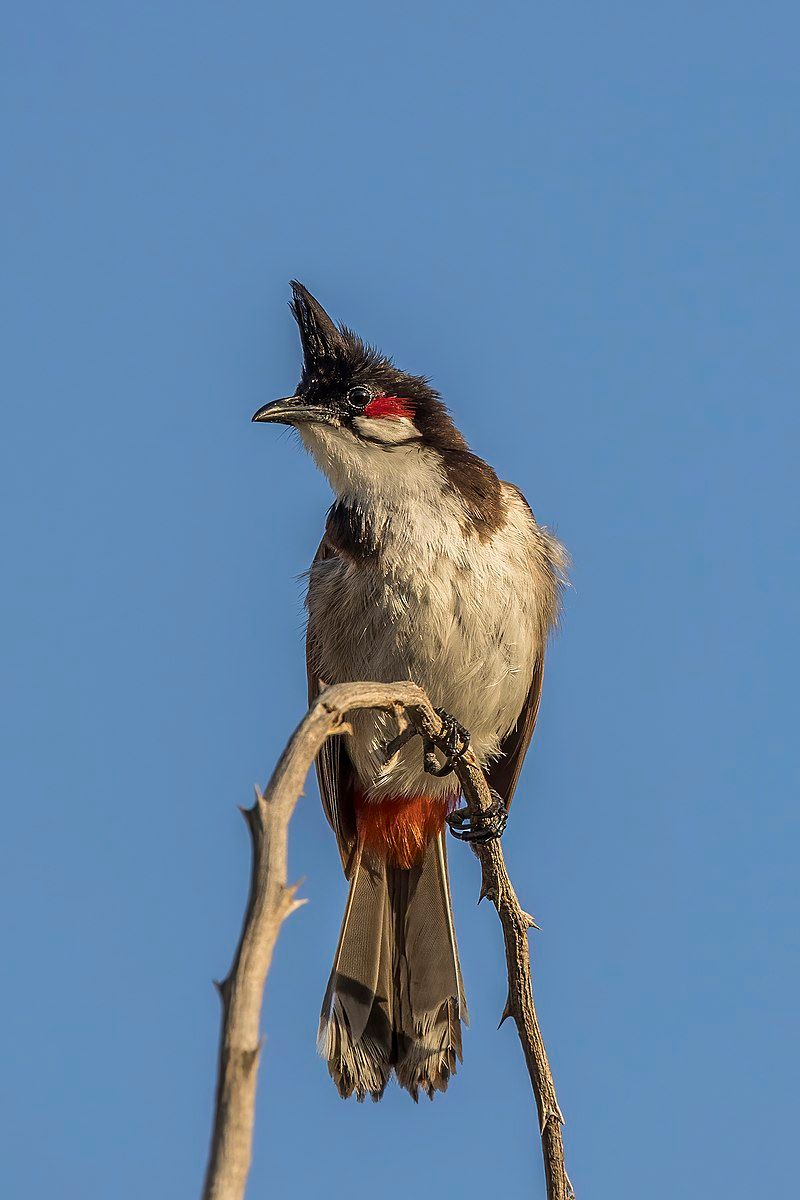
The red-whiskered bulbul, or crested bulbul, is a species of passerine bird native to Asia. It is a member of the Bulbul family, which includes a variety of songbirds with short, rounded wings and short legs.
The red-whiskered bulbul is a frugivore, meaning that it mostly eats fruits, and is primarily found in tropical climates, such as India, China, and Southeast Asia.
It has also been introduced in many other tropical areas around the world, where it has managed to establish itself as part of the local wildlife. It is a medium-sized bird, with a rounded head and a distinctive crest on its forehead.
Its main colors are black, white, and grey, but it has a distinctive red patch of feathers around its eyes, hence its name. It has an incredibly wide range of vocalizations, including a variety of whistles, chirps, and warbles, which it uses to communicate with other birds.
| Kingdom | Animalia |
| Phylum | Chordata |
| Class | Aves |
| Order | Passeriformes |
| Family | Pycnonotidae |
| Genus | Pycnonotus |
| Species | P. jocosus |
2. Lesser Whistling Duck
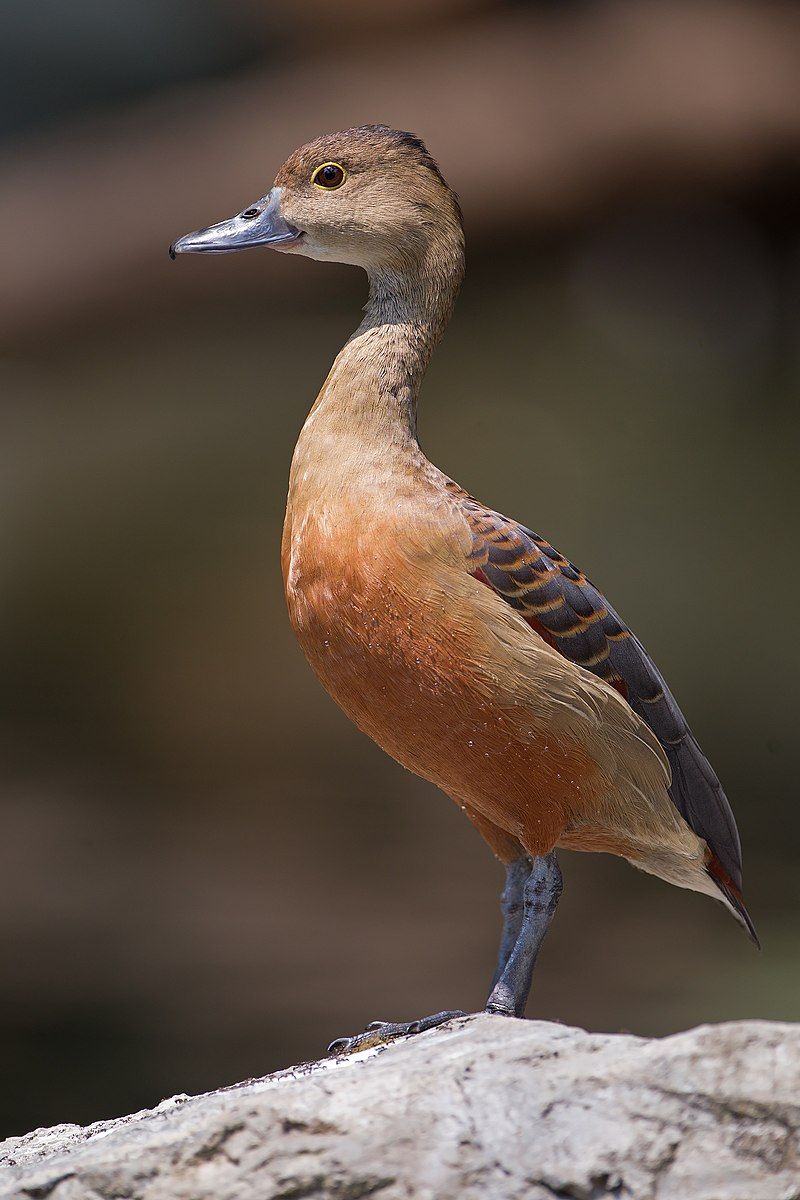
The lesser whistling duck is a species of whistling duck that is native to the Indian subcontinent and Southeast Asia. Its other common names are Indian whistling duck and lesser whistling teal. This duck species is nocturnal, meaning that it primarily feeds at night.
During the day, they form large flocks around wetlands such as lakes and paddy fields, where they can find food and shelter. The lesser whistling duck is a fairly small species, typically reaching lengths of just over a foot.
Its head and neck are dark brown, while its body is mostly grey and white. Its tail is white, with a dark line along the top. It has a distinctive call, which is how it got its name. The call is a loud whistling sound that can be heard from quite a distance.
The lesser whistling duck is a social species, and they can often be seen in large flocks around wetlands. This makes them an easy species to spot and identify.
They breed in the Indian subcontinent and Southeast Asia, and they typically lay their eggs in tree cavities or on the ground. The lesser whistling duck is an important species for wetland ecosystems.
They are an important food source for other animals, and they help to keep wetlands healthy by consuming aquatic plants and invertebrates. Additionally, their droppings are a valuable source of nutrients for the wetland ecosystem.
| Kingdom | Animalia |
| Phylum | Chordata |
| Class | Aves |
| Order | Anseriformes |
| Family | Anatidae |
| Genus | Dendrocygna |
| Species | D. javanica |
3. Olive-Backed Sunbird
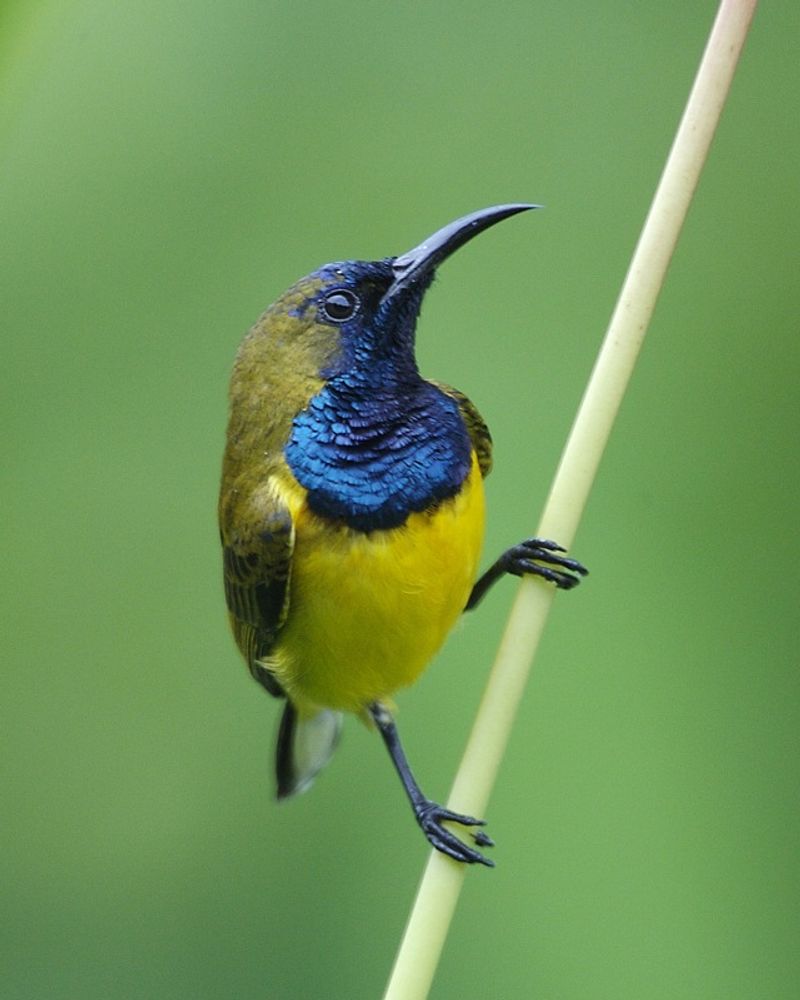
The olive-backed sunbird is a species of sunbird that is found throughout a large area of the world, stretching from Southern Asia to Australia. It is a small bird, with a body length of 10-11 cm, and a wingspan of between 16-18 cm.
The upper parts of the bird are a deep olive-green color, while the underside is yellow. The male has a glossy black head, while the female has a duller brown-black head. The olive-backed sunbird feeds mainly on nectar from flowers, but will also take small insects and spiders.
It has a long curved bill which is adapted for extracting nectar from deep within flowers.
Its diet also includes some fruit, and it is known to forage in groups, which is rare for a sunbird. The olive-backed sunbird prefers open woodlands, gardens, and scrubland, and is often found near rivers and lakes.
Breeding takes place from March to August in the northern part of its range, and from June to December in the southern part. The nest is a small cup-shaped structure, made of plant fibers and spider webs, and is usually placed in a tree or shrub.
The female lays two or three eggs, which are incubated for 14-15 days. The olive-backed sunbird is fairly common throughout its range and is not considered to be a threatened species.
Despite this, it is still vulnerable to the destruction of its habitat and is at risk due to the continuing destruction of its natural habitats.
| Kingdom | Animalia |
| Phylum | Chordata |
| Class | Aves |
| Order | Passeriformes |
| Family | Nectariniidae |
| Genus | Cinnyris |
| Species | C. jugularis |
4. Mrs. Hume’s Pheasant
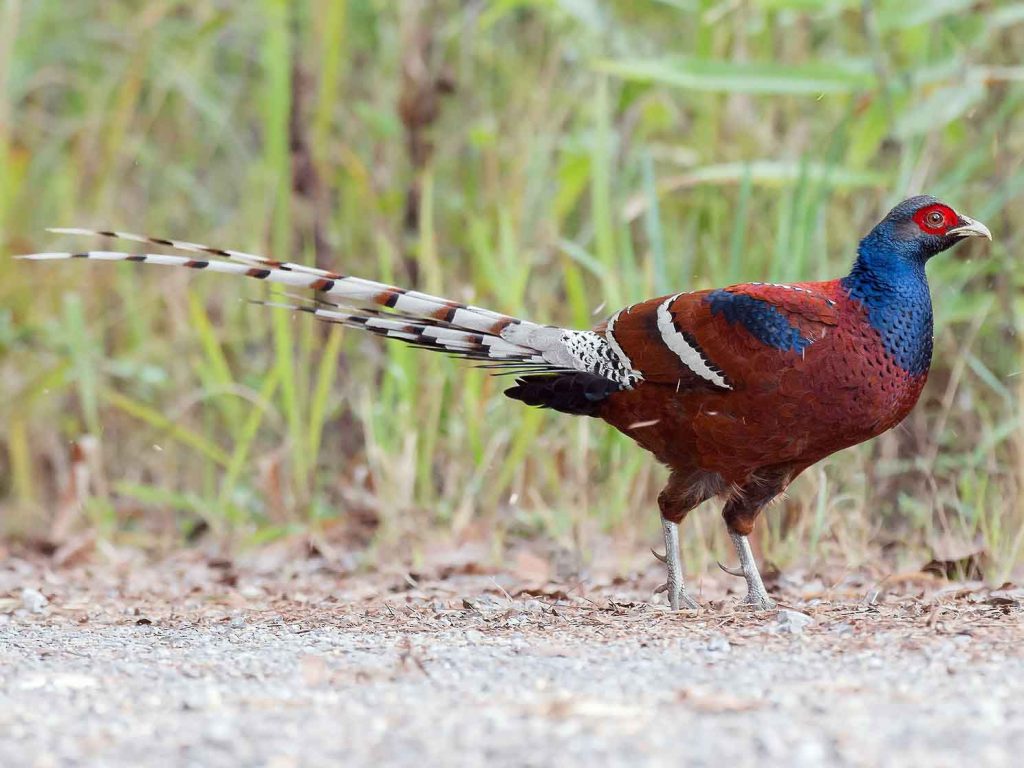
Source: ebird.org
Mrs. Hume’s pheasant is a large, distinctive bird found in forests. It is up to 90 cm in length and has a greyish-brown head with bare red facial skin. Its plumage is chestnut brown, and it has a yellowish bill and brownish-orange iris.
Its wings feature white wing bars and metallic blue neck feathers. This unique combination of features makes it easily recognizable and gives the species its alternate name, the bar-tailed pheasant. This species is known to inhabit the forests of South and Southeast Asia.
It is usually seen alone or in small groups, which often include other types of pheasants. It feeds mainly on insects, but will also consume other small invertebrates, seeds, and fruits. Mrs. Hume’s pheasant is a threatened species due to habitat destruction and hunting.
It is listed as Vulnerable on the IUCN Red List and is protected in many countries. Conservation efforts are necessary to ensure that this beautiful species will continue to thrive in its natural environment.
| Kingdom | Animalia |
| Phylum | Chordata |
| Class | Aves |
| Order | Galliformes |
| Family | Phasianidae |
| Genus | Syrmaticus |
| Species | S. humiae |
5. Purple Sunbird
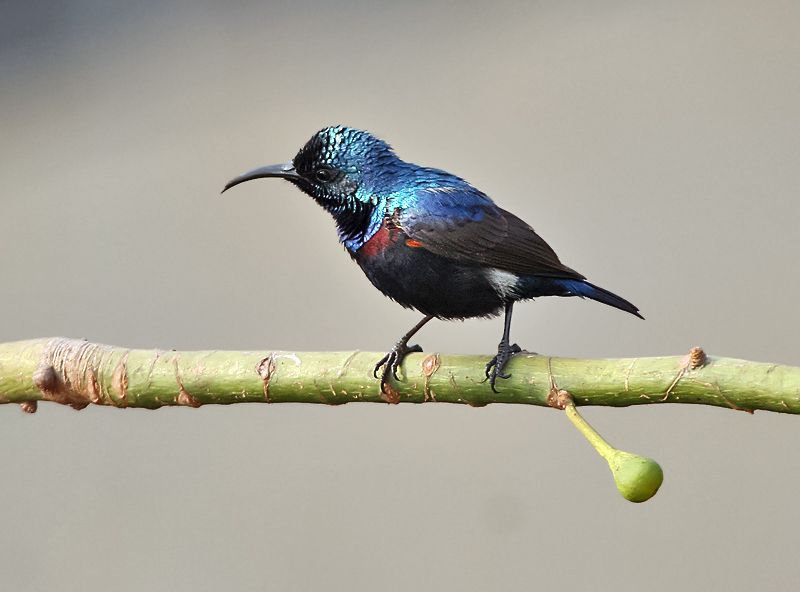
The purple sunbird is a small, vibrant bird that belongs to the sunbird family. It is found mainly in South and Southeast Asia, but can also be seen in some parts of the Arabian peninsula. Sunbirds typically feed on nectar, but they also take up insects to feed their young.
This helps the young birds to grow and develop healthy. The purple sunbird is no different in this regard and supplements its diet with insects.
They rely on nectar for most of their sustenance, however, and can often be seen flitting from flower to flower in search of nutritious meals. As they take sustenance from the flowers, they aid in the process of pollination.
The purple sunbird is a beautiful addition to the avian world, and its presence in the South and Southeast Asian regions is highly valued.
| Kingdom | Animalia |
| Phylum | Chordata |
| Class | Aves |
| Order | Passeriformes |
| Family | Nectariniidae |
| Genus | Cinnyris |
| Species | C. asiaticus |
6. Green-Billed Malkoha
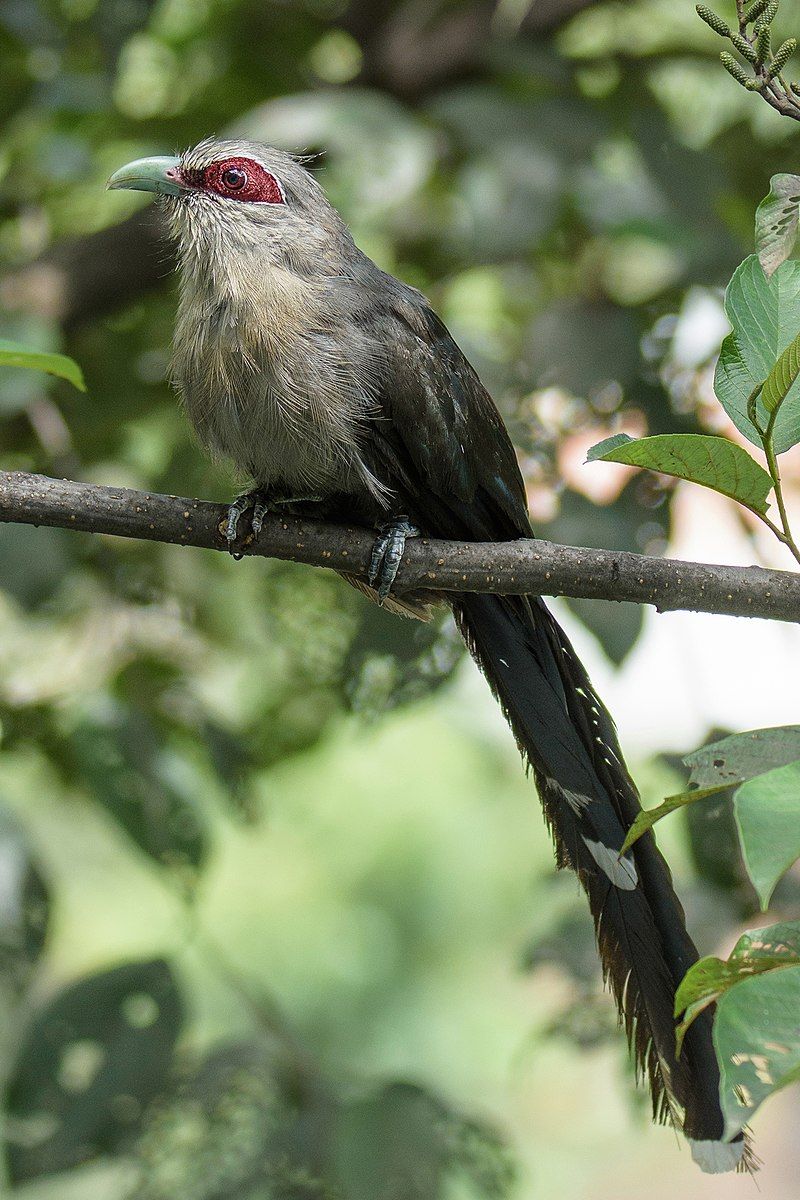
The Green-billed Malkoha is a species of cuckoo that can be found in the Indian Subcontinent and Southeast Asia. It is a non-parasitic bird, meaning that it does not lay its eggs in the nests of other birds.
It is characterized by its waxy bluish black feathers and a long, graduated tail with white tips.
The most distinctive feature of the bird is its prominent and curved bill.The Green-billed Malkoha is found in dry scrub and thin forests, searching for food on the ground or in low shrubs and trees.
It primarily feeds on insects, larvae, and small reptiles, and may also consume some fruits. Its preferred habitat is lightly wooded grassland, but it is also found in dry deciduous and evergreen forests. The species is not considered threatened and is not considered endangered.
The Green-billed Malkoha is a solitary bird that is most active during the day, but can also be seen at night. It is usually seen singly or in pairs and is often seen perched on a treetop or ground.
It is known to be quite vocal, often producing a series of soft whistles and clicks. It is also known to give a distinctive, melancholy call during the breeding season.
The Green-billed Malkoha is an important part of the ecosystem, playing a role in controlling the insect population. It is a fairly common species, and its conservation status is considered to be stable.
| Kingdom | Animalia |
| Phylum | Chordata |
| Class | Aves |
| Order | Cuculiformes |
| Family | Cuculidae |
| Genus | Phaenicophaeus |
| Species | P. tristis |
7. Mountain Bamboo Partridge
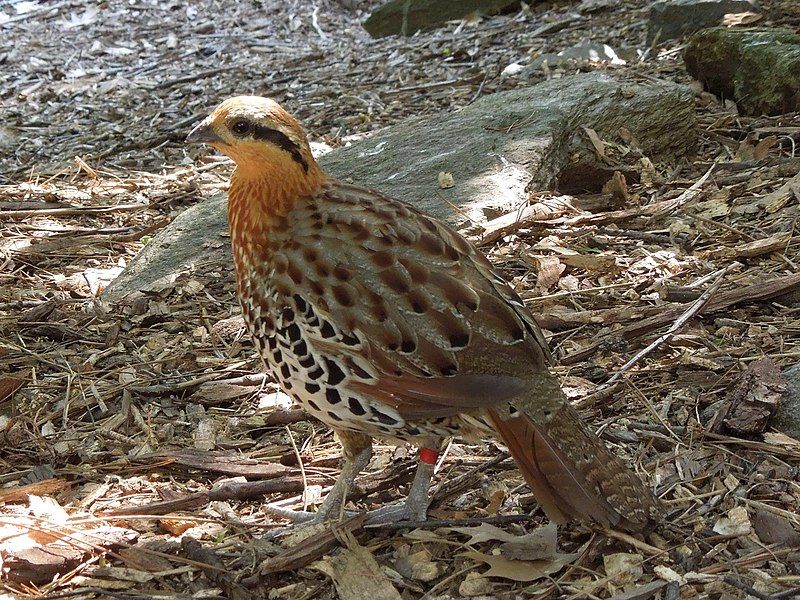
The mountain bamboo partridge is a species of bird belonging to the family Phasianidae. It is native to Bangladesh, Tibet, India, Laos, Myanmar, Thailand and Vietnam.
The binomial name of this bird, which is a two-part scientific name, is a way of honoring Major-General Albert Fytche. The mountain bamboo partridge is an attractive bird, with its plumage consisting of a mix of brown, cream and grey colors.
These colors help the bird blend in with its natural environment, providing it with camouflage from potential predators. The bird also has a unique set of vocalizations, which are believed to be used in communication with other members of its species.
The mountain bamboo partridge is mainly found in forests, especially near bamboo thickets. They feed mostly on small invertebrates such as insects, as well as some seeds and plant material.
The bird is generally seen in small groups of six to eight individuals, and they may sometimes form large flocks when the food is plentiful.
The mountain bamboo partridge is considered to be of least concern by the International Union for Conservation of Nature, as its population is believed to be stable.
However, its habitat is threatened by deforestation and other human activities, and it is important to protect the remaining forests to ensure the survival of this species.
| Kingdom | Animalia |
| Phylum | Chordata |
| Class | Aves |
| Order | Galliformes |
| Family | Phasianidae |
| Genus | Bambusicola |
| Species | B. fytchii |
8. Sooty-Headed Bulbul
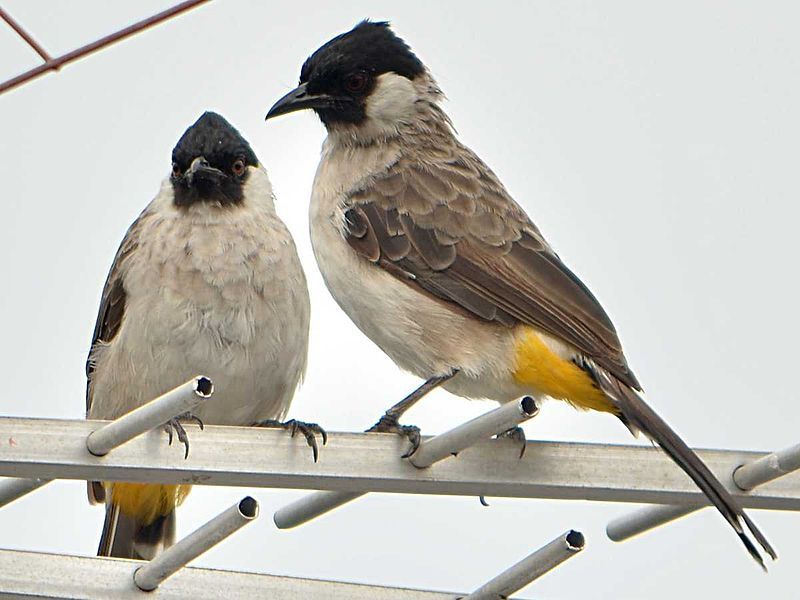
The sooty-headed bulbul is a species of songbird in the family Pycnonotidae. This species is native to south-eastern Asia and is typically found inhabiting subtropical or tropical moist lowland forests.
The sooty-headed bulbul is a medium-sized bird that has a distinctive sooty-black head and neck, and a greyish-olive back. Its wings have a white bar and its tail is tipped with a white band.
It has a strong, melodious song which is often heard in the early morning and late afternoon. The sooty-headed bulbul feeds on fruits and insects, and is usually seen in pairs or small groups. It also has a tendency to join mixed-species flocks.
This species is generally common within its range, however, it is threatened by habitat loss and degradation. Conservation efforts are needed to ensure the continued survival of the sooty-headed bulbul.
| Kingdom | Animalia |
| Phylum | Chordata |
| Class | Aves |
| Order | Passeriformes |
| Family | Pycnonotidae |
| Genus | Pycnonotus |
| Species | P. aurigaster |
9. Rufous-Winged Buzzard
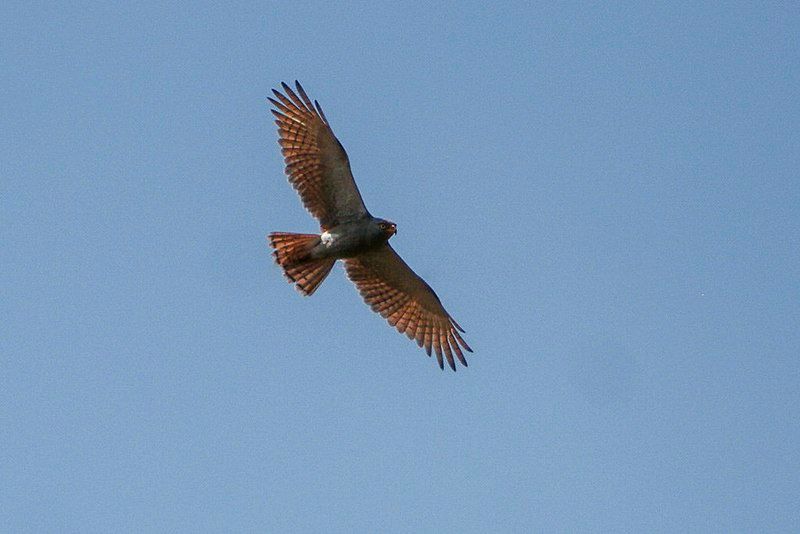
The Rufous-winged Buzzard is a medium-sized bird of prey that is native to parts of Asia. It is found mainly in Indochina, Java, and Sulawesi. This species is a resident breeder, meaning that it does not migrate and can be found in the same area year-round.
It prefers deciduous forests and second-growth areas, and it can be found up to 800 meters above sea level. The Rufous-winged Buzzard has a grey head and underparts, which are also streaked with grey on the crown, neck, and breast.
The bird has a length of between 38 and 43 centimeters, making it a medium-sized bird of prey. It has a powerful beak that it uses to catch and eat its prey, which typically consists of small mammals, insects, and reptiles.
Its eyes are well-adapted for hunting, and its strong feet help it to grip its prey and keep it from escaping. The Rufous-winged Buzzard is a solitary bird and is rarely seen in flocks. It is a shy bird and will often fly away when disturbed.
It is also an important part of the local ecosystem, helping to keep the populations of small mammals and insects in check.
| Kingdom | Animalia |
| Phylum | Chordata |
| Class | Aves |
| Order | Accipitriformes |
| Family | Accipitridae |
| Genus | Butastur |
| Species | B. liventer |
10. Black-Collared Starling
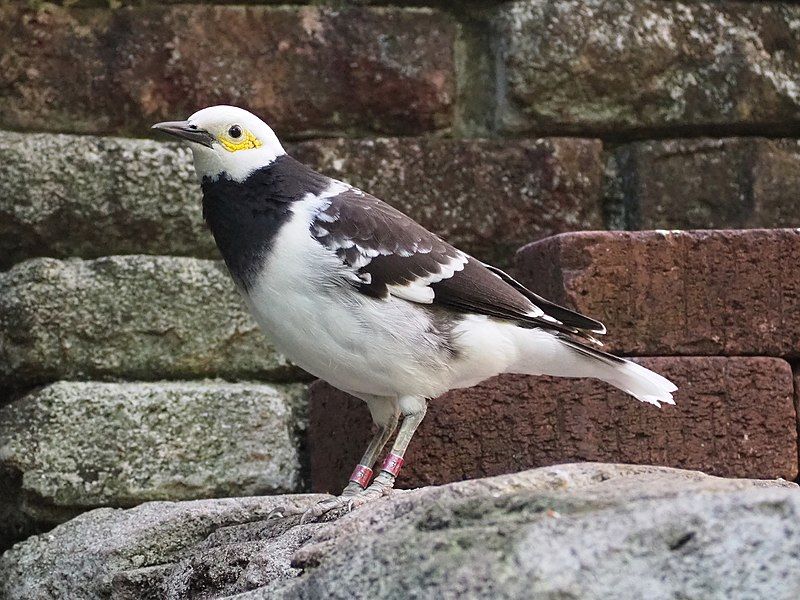
The black-collared starling is a species of starling in the family Sturnidae. It has a distinct appearance, with its black and white plumage and a black collar. This species of starling can be found in southern China, and most of mainland Southeast Asia.
In addition to its natural habitats, it has also been introduced to Taiwan, Malaysia and Singapore. This species of starling is known for its strong flight and adaptability to different habitats. It is a social bird, often found in flocks and feeding in open areas.
It is also known to feed on insects, seeds, fruits and grains. The black-collared starling is an important species in many different ecosystems.
It helps to disperse seeds and pollinate flowers, providing essential services to plants, which in turn, benefits animals and other organisms.
It is also an important source of food for predators, such as raptors and other birds. The black-collared starling has been listed as a species of least concern by the International Union for Conservation of Nature.
Despite this, its population is declining and it is threatened by habitat loss and degradation. Therefore, it is important to conserve its habitats and ensure that its numbers remain stable.
| Kingdom | Animalia |
| Phylum | Chordata |
| Class | Aves |
| Order | Passeriformes |
| Family | Sturnidae |
| Genus | Gracupica |
| Species | G. nigricollis |
11. Long-Tailed Shrike
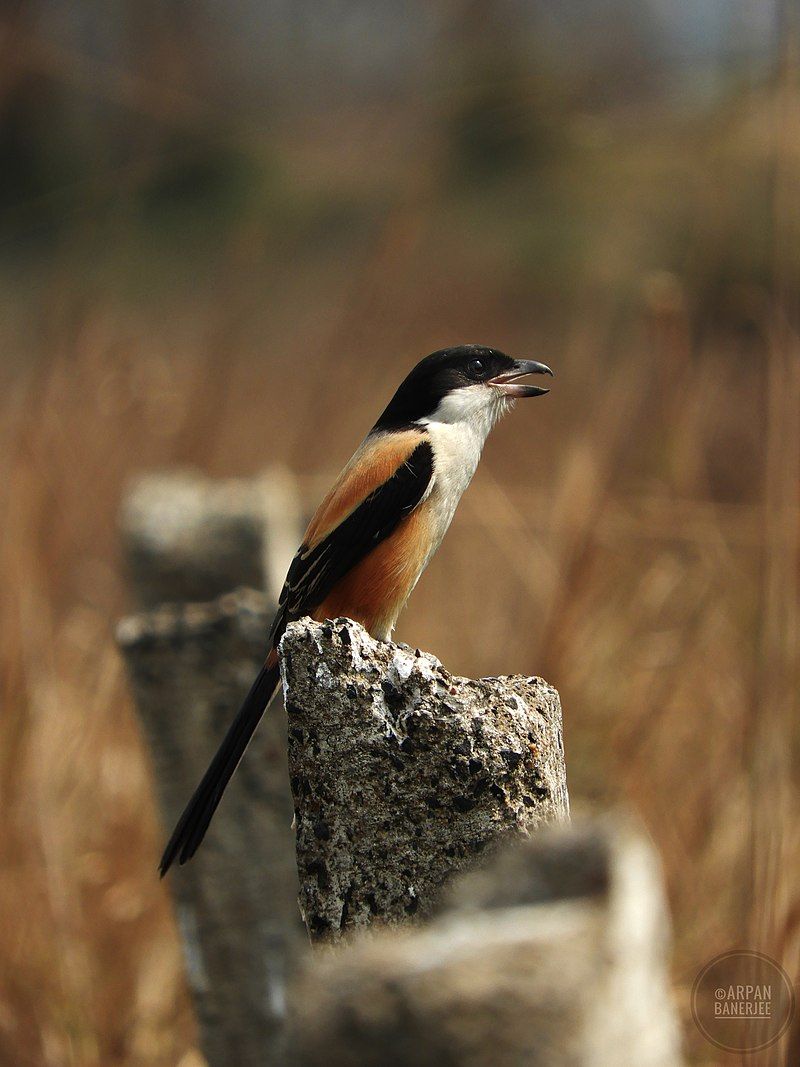
The long-tailed shrike, also known as the rufous-backed shrike, is a member of the Laniidae family, which consists of shrikes. This species of bird can be found in a wide range of habitats throughout Asia, both on the mainland and on the eastern archipelagos.
The variation in plumage across its range is quite remarkable, with different colors and patterns found in each area. Generally, the bird has a brown back, grey wings, and a white throat and belly.
It is also distinguished by its long tail, which is black with white outer feathers. The long-tailed shrike is a fairly common bird in Asia and can be found in a variety of habitats, such as grasslands, scrublands, and open woodlands.
It is an opportunistic feeder, meaning it will eat almost any type of insect, small vertebrates, and even some fruits. This species is also known for its territorial behavior, often chasing away other birds and animals from its territory.
Overall, the long-tailed shrike is a fascinating bird that can be found across Asia. Its wide range and varied plumage make it an interesting species to observe.
Its opportunistic feeding habits and territorial behavior also provide interesting moments of observation in the wild.
| Kingdom | Animalia |
| Phylum | Chordata |
| Class | Aves |
| Order | Passeriformes |
| Family | Laniidae |
| Genus | Lanius |
| Species | L. schach |
12. Pied Bushchat
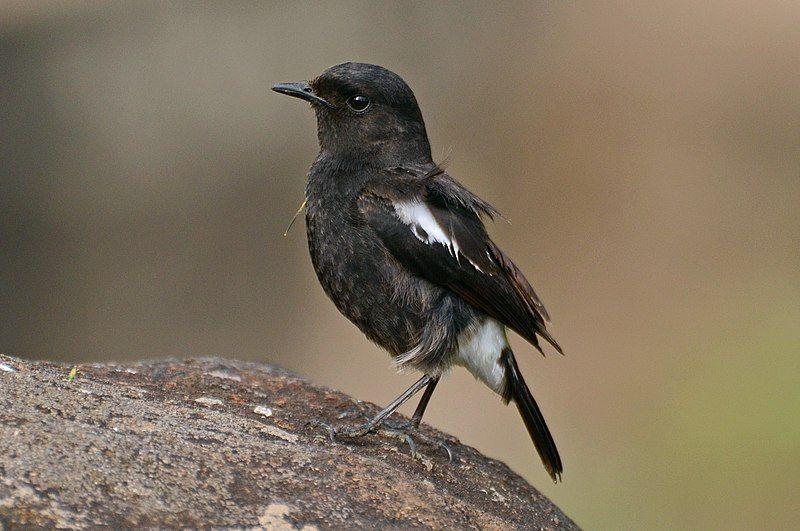
The pied bush chat is a small bird belonging to the passerine bird family, which is found across a vast area stretching from West Asia to Central Asia, the Indian subcontinent, and Southeast Asia.
There are sixteen distinct subspecies of the pied bush chat, with many of them found on separate islands across the region. Each of these subspecies has its own unique characteristics, such as different plumage colours and patterns, which help to differentiate them.
The bird is mainly found in habitats that are open and grassy, such as grasslands, scrub, and farmland, and they are also known to inhabit coastal areas. They feed mainly on insects, spiders, and small invertebrates, and they are also known to take grains and fruits.
The pied bush chat is generally a non-migratory species, with most individuals staying in their home range for the majority of the year.
| Kingdom | Animalia |
| Phylum | Chordata |
| Class | Aves |
| Order | Passeriformes |
| Family | Muscicapidae |
| Genus | Saxicola |
| Species | S. caprata |
13. Yellow-Browed Warbler
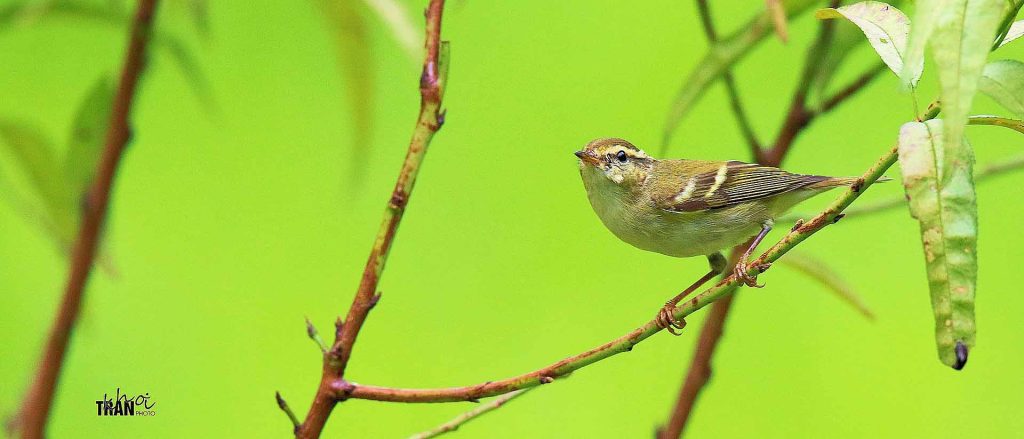
Source: Wikipedia
The yellow-browed warbler is a species of leaf warbler that breeds in the east Palearctic, the easternmost region of the Palearctic ecozone which comprises most of Europe and parts of Asia.
It is a strongly migratory species that spends the winter months mainly in tropical South and Southeast Asia, but small numbers also migrate to Western Europe.
This species, like the rest of the family Phylloscopidae, was formerly categorized in the Old World warbler assemblage, a loose grouping of songbirds which includes species such as the African warbler, the scarlet-breasted robin, and the white-eyed slaty flycatcher.
The yellow-browed warbler is characterized by its yellow eyebrows and greenish-brownish plumage and is often seen in open woodlands and gardens. Its diet consists of insects, spiders, and other invertebrates, which it forages for on the ground and in the undergrowth.
| Kingdom | Animalia |
| Phylum | Chordata |
| Class | Aves |
| Order | Passeriformes |
| Family | Phylloscopidae |
| Genus | Phylloscopus |
| Species | P. inornatus |
14. Silver-Eared Laughing Thrush
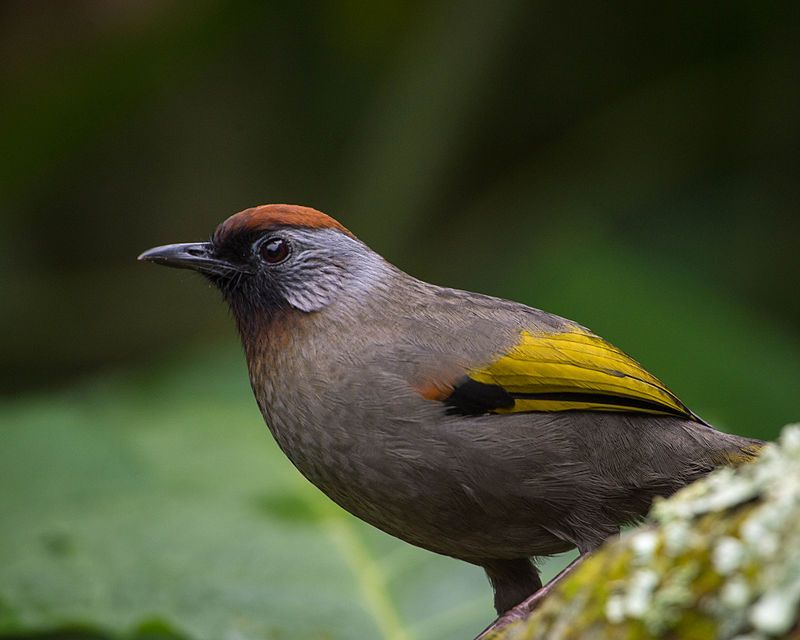
The silver-eared laughing thrush is a species of bird belonging to the family Leiothrichidae. It is found in a wide range of habitats in southern Yunnan, Laos, Myanmar, Thailand and Vietnam.
This species is easily distinguished from other members of its family by its distinct silver-grey ear patch. It is a medium-sized bird, measuring approximately 21 centimeters in length. The silver-eared laughingthrush has a brownish-grey head, with a chestnut-colored crown.
Its wings and tail are a darker brown, while its throat and breast are pale gray. It has a white stripe running over its eyes, and a white line on its flanks.
Its bill is black, and its legs are a pinkish-yellow color. The silver-eared laughing thrush was formerly considered to be a subspecies of the chestnut-crowned laughing thrush, G. erythrocephalus.
However, recent studies have shown that the two species are distinct enough to warrant separate recognition. The silver-eared laughingthrush is a shy bird and is usually found in small flocks, foraging in the undergrowth of forests and gardens.
Its diet consists of insects, seeds, fruits, and buds. It is a vocal species, and its call is an easily recognizable, high-pitched “tseee-tseee”.
| Kingdom | Animalia |
| Phylum | Chordata |
| Class | Aves |
| Order | Passeriformes |
| Family | Leiothrichidae |
| Genus | Trochalopteron |
| Species | T. melanostigma |
15. Green-Tailed Sunbird
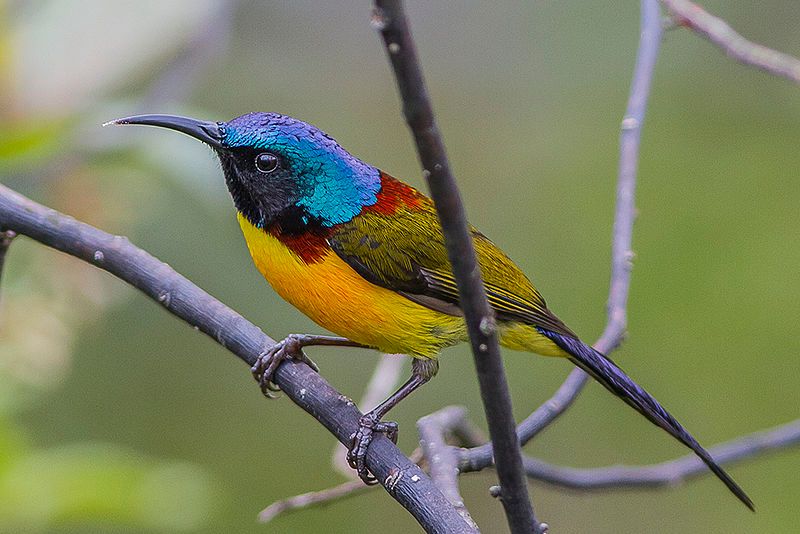
The green-tailed sunbird, also known as the Nepal yellow-backed sunbird, is a species of bird belonging to the Nectariniidae family. This species is native to the northern regions of the Indian subcontinent, extending eastwards into parts of Southeast Asia.
In particular, it is found in Nepal, as well as the states of Bhutan, Bangladesh, India, Myanmar, and Thailand. The green-tailed sunbird has a distinctive bright yellow rump and tail feathers, while its upperparts are a light olive-green hue.
Its underparts are pale yellowish-green and its bill and legs are black. The adult male has a white throat and a black face, while the female has a brownish-black face and white throat.
Furthermore, both sexes have white tips on their outer tail feathers. The green-tailed sunbird feeds mainly on nectar from flowers, but it also eats insects and spiders. It can often be seen hovering over flowers and bushes in search of food.
It usually occurs in pairs or small groups and is often seen in gardens or near water bodies. Overall, the green-tailed sunbird is a beautiful and unique species of bird. It is important to protect its natural habitat in order to ensure its continued survival.
| Kingdom | Animalia |
| Phylum | Chordata |
| Class | Aves |
| Order | Passeriformes |
| Family | Nectariniidae |
| Genus | Aethopyga |
| Species | A. nipalensis |
16. Asian Barred Owlet
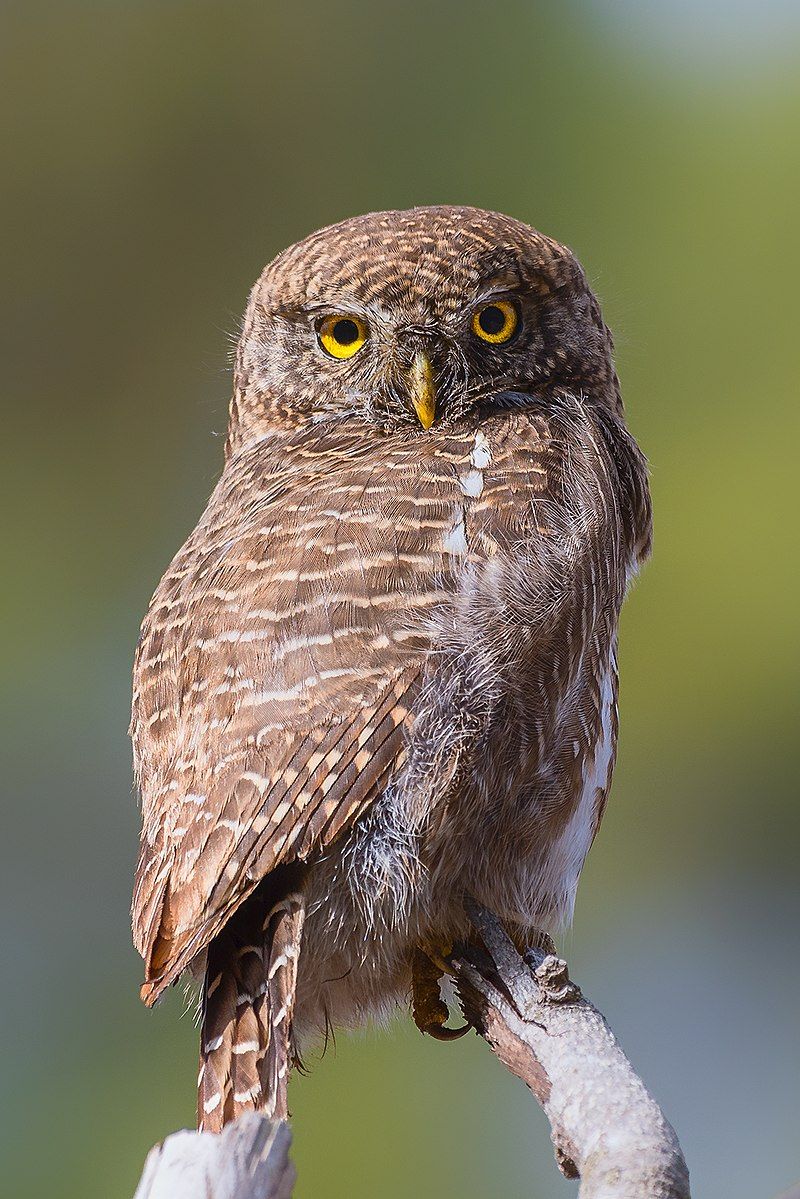
The Asian barred owlet is a resilient species of pygmy owl that inhabits the temperate forests of southern China, northeastern parts of the Indian Subcontinent, and mainland Southeast Asia.
It is a small but powerful creature with a wingspan of about 7-8 inches and a body length of up to 8 inches. The owlet has a distinct barred pattern across its chest and back with an overall dark brown coloration.
It has a large round head with a white facial disk, and its eyes are yellow-orange.
The owlet has long, pointed wings which allow it to fly silently, allowing it to ambush its prey. The owlet is mainly active during the day, and its diet consists of mostly insects, worms, small reptiles, and small mammals.
During the breeding season, the owlet nests in hollow trees, and it usually lays two to four eggs.
The owlet also communicates by making loud, distinct hoots. The owlet plays an important part in the local ecosystem, controlling populations of insects, reptiles, and small mammals. However, its numbers have been in decline due to habitat loss, as well as hunting and trapping.
Conservation efforts are ongoing in order to protect this species and ensure its survival in the wild.
| Kingdom | Animalia |
| Phylum | Chordata |
| Class | Aves |
| Order | Strigiformes |
| Family | Strigidae |
| Genus | Glaucidium |
| Species | G. cuculoides |
17. Black-Throated Sunbird
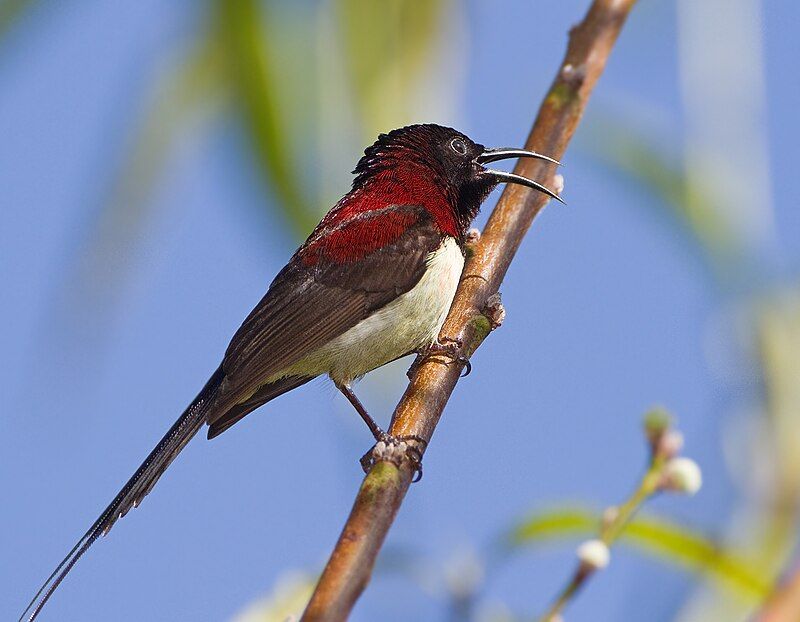
The black-throated sunbird is a species of bird found in the Indian subcontinent and adjoining regions of Southeast Asia. It has a wide range, covering Bangladesh, Bhutan, Cambodia, China, India, Laos, Malaysia, Myanmar, Nepal, Thailand, and Vietnam.
It belongs to the family Nectariniidae, which is a group of birds that are known for their colorful plumage and their ability to feed on nectar from flowers. Black-throated sunbirds are small birds that measure around 10–12 cm in length.
They have a distinctive black throat and head, and the rest of their body has an iridescent green color. The wings and tail are dark grey, and the underside is white. The male and female have similar plumage, but the male has a brighter green color on the head.
These birds are usually found in open forests, scrublands, and agricultural areas. They feed mainly on nectar from flowers, but they also feed on insects and spiders.
They can be seen flying from flower to flower, and they are known for their characteristic hovering behavior. Black-throated sunbirds are important pollinators in their range, as they help to spread pollen between different plants.
They are also a vital part of the food chain, as they provide food for many other species. They are an important part of the ecosystem and are considered indicator species, meaning that they can be used to measure the health of the environment.
| Kingdom | Animalia |
| Phylum | Chordata |
| Class | Aves |
| Order | Passeriformes |
| Family | Nectariniidae |
| Genus | Aethopyga |
| Species | A. saturata |
18. Spotted Dove
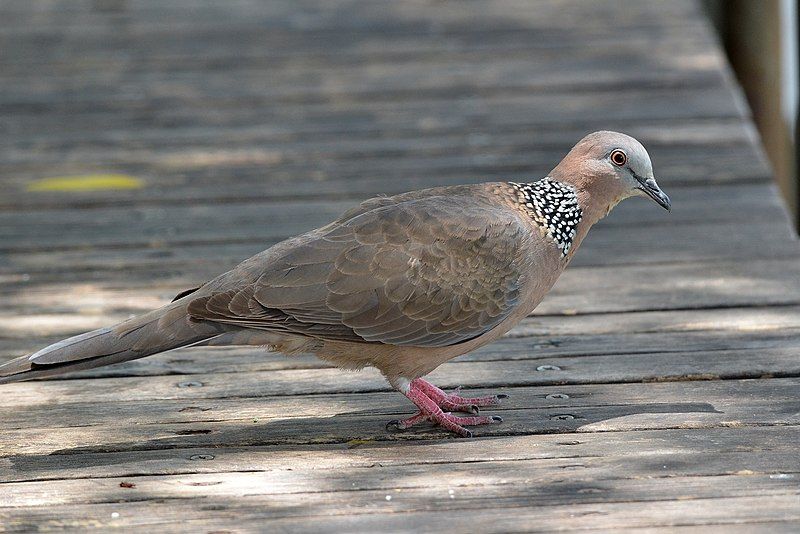
The spotted dove is a species of pigeon that is found in the Indian subcontinent and Southeast Asia. It is a small bird, characterized by its long tail. It is a common resident breeding bird in its native range and has been introduced to many other parts of the world.
Feral populations of the spotted dove have established themselves in some of these regions, forming a new population that is distinct from the native one. This is evidence of the species’ adaptability and its ability to colonize different habitats.
The spotted dove is a beneficial species that provides a variety of ecological services. For example, it pollinates flowering plants, disperses seeds, and helps to keep insect populations in check.
It has also been known to eat the eggs and chicks of other species, however, which can be seen as a negative effect. In addition, it can compete with native species for resources, such as nesting sites and food.
Despite this, the spotted dove is an important species to the ecosystems it inhabits, and its presence should be respected and conserved.
| Kingdom | Animalia |
| Phylum | Chordata |
| Class | Aves |
| Order | Columbiformes |
| Family | Columbidae |
| Genus | Spilopelia |
| Species | S. chinensis |
19. Scarlet-Backed Flowerpecker
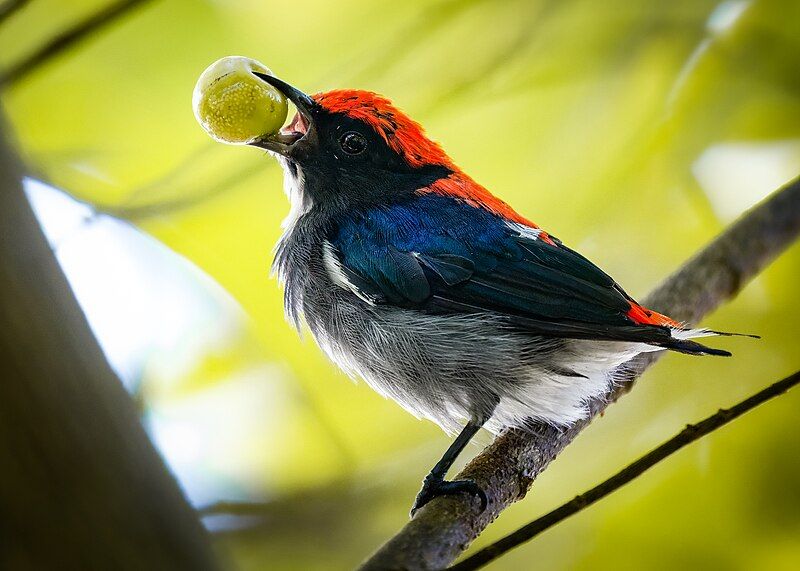
The scarlet-backed flowerpecker is a unique species of bird belonging to the Dicaeidae family of flowerpeckers. It is easily identified by its distinctive coloration and markings.
The male has a navy blue plumage with a bright red streak running down its back from its crown all the way down to its tail coverts. This red streak is how the bird gets its name. Meanwhile, the female and juvenile birds are mostly olive green in color.
This striking sexual dimorphism makes the scarlet-backed flowerpecker an attractive and colorful species of bird. The scarlet-backed flowerpecker is native to parts of India and Southeast Asia.
It is found mainly in dense forests and woodlands and is known to feed on small fruits and insects. Due to its small size, it is quite vulnerable to predation. As a result, it is listed as Near Threatened on the IUCN Red List.
The scarlet-backed flowerpecker is a unique and beautiful species of bird that is worth protecting. Conservation efforts must be made to ensure that this species is not driven to extinction by habitat loss and other human activity.
| Kingdom | Animalia |
| Phylum | Chordata |
| Class | Aves |
| Order | Passeriformes |
| Family | Dicaeidae |
| Genus | Dicaeum |
| Species | D. cruentatum |
20. Asian Fairy-Bluebird
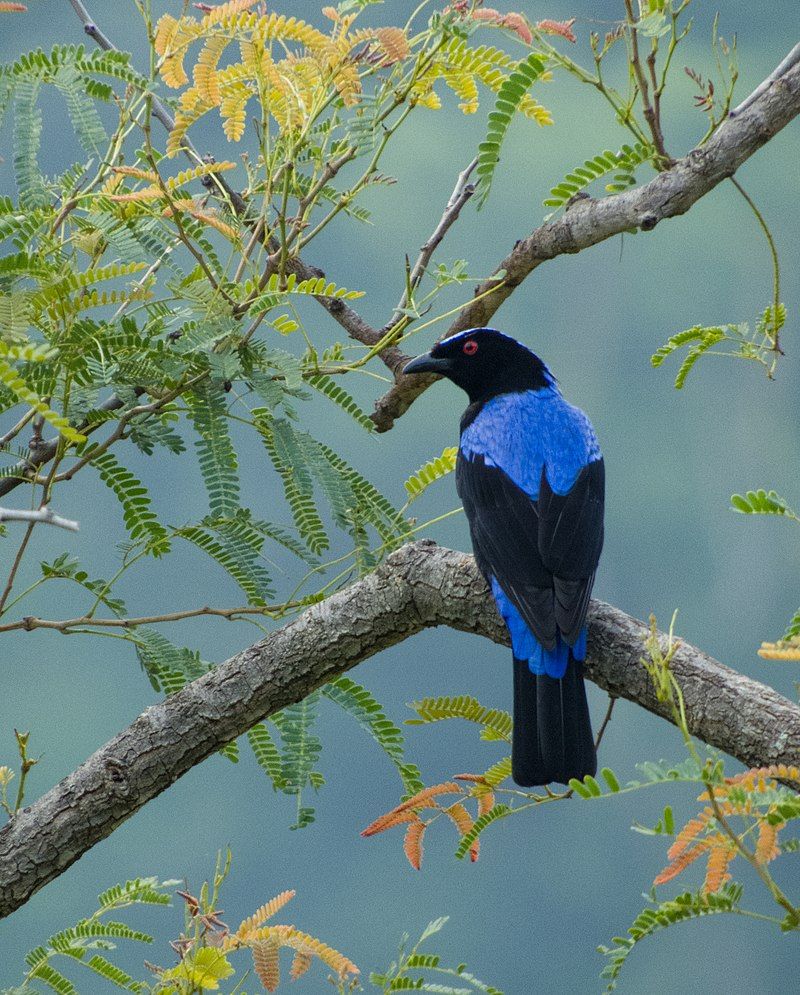
The Asian fairy bluebird is a beautiful and unique species of passerine bird native to the forests of tropical southern Asia, Indochina, and the Greater Sundas.
It is a medium-sized species, meaning that it is not too large or too small, and it inhabits arboreal habitats, meaning that it prefers to live in trees rather than other habitats.
It is known for its bright blue feathers and is a sight to behold. The Asian fairy-bluebird builds its nests in small cups in trees and usually lays two or three eggs in them.
This species of bird was first described by British ornithologist John Latham in 1790, and since then has been studied by scientists and admired by birdwatchers.
It is a species that has been able to maintain its population despite the destruction of its natural habitat, thanks to its ability to adapt to different environments. Overall, the Asian fairy bluebird is a unique and beautiful species of bird that is native to many parts of Asia.
It is a species that is admired by birdwatchers and studied by scientists. Its ability to adapt to different habitats has allowed it to maintain its population despite the destruction of its natural habitat.
| Kingdom | Animalia |
| Phylum | Chordata |
| Class | Aves |
| Order | Passeriformes |
| Family | Irenidae |
| Genus | Irena |
| Species | I. puella |
21. Hill Blue Flycatcher
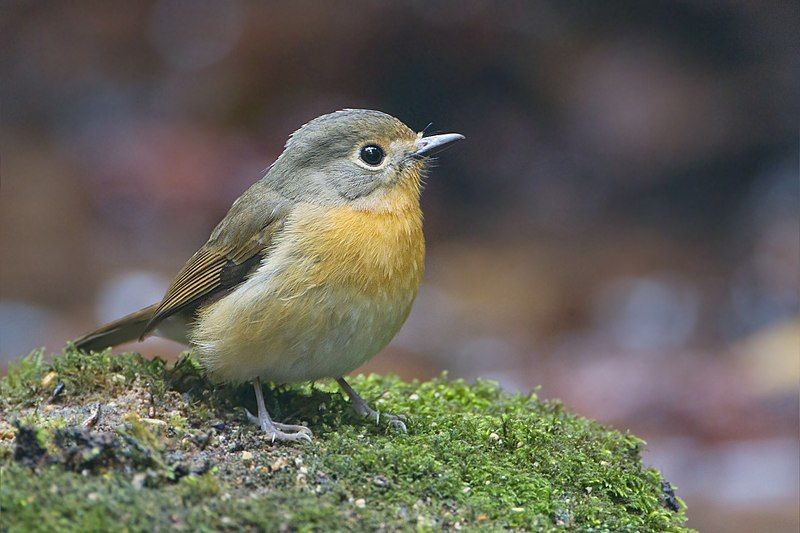
The Hill Blue Flycatcher (Muscicapidae) is a species of bird found in various parts of Asia, including southern China, northeastern India, and Southeast Asia. Prior to molecular phylogenetic studies, the Hill Blue Flycatcher was classified as a subspecies of Cyornis banyumas.
These studies, however, have since revealed that the Hill Blue Flycatcher is actually a distinct species.
This means that, based on the analysis of the species’ molecular characteristics, the Hill Blue Flycatcher is sufficiently different from Cyornis banyumas to be considered a separate species. As a result, the Hill Blue Flycatcher is now classified as its own distinct species.
| Kingdom | Animalia |
| Phylum | Chordata |
| Class | Aves |
| Order | Passeriformes |
| Family | Muscicapidae |
| Genus | Cyornis |
| Species | C. whitei |
22. Red Avadavat
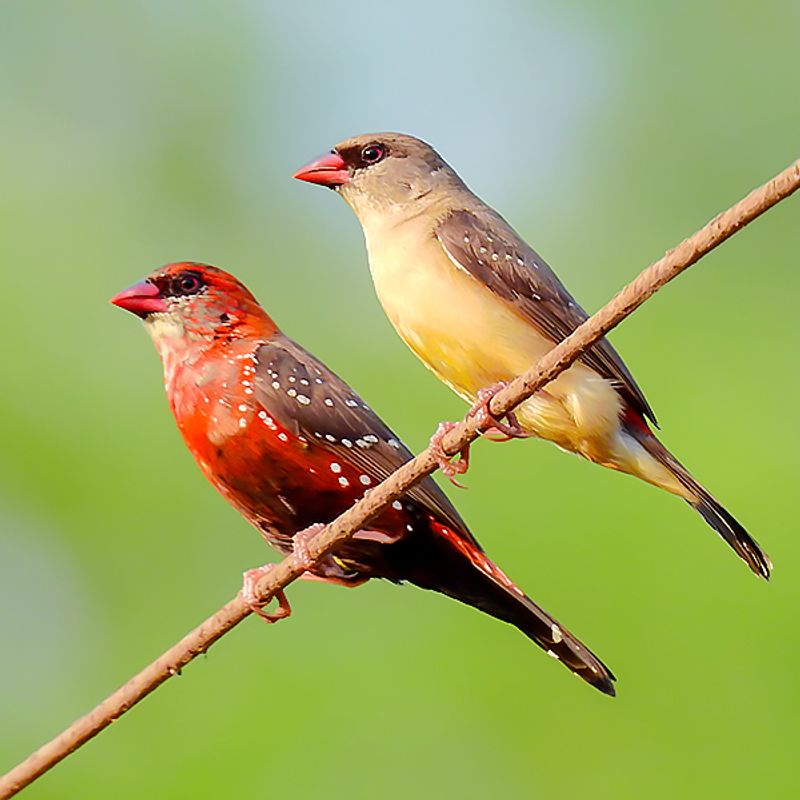
The Red Avadavat, also known as the Red Munia or Strawberry Finch, is a sparrow-sized bird belonging to the Estrildidae family. It is native to tropical Asia and is a common sight in open fields and grasslands.
During their breeding season, males of this species have particularly colourful plumage, which has made them popular as cage birds. The Red Avadavat is a small bird, usually measuring around 4.7 inches in length.
It has a short, broad beak and a round head, and its plumage is predominantly grey and brown. However, the male birds have a bright red head and underparts, with a black and white striped back and tail.
These striking colours make the males particularly attractive as cage birds. The birds are highly sociable and live in flocks, which can contain up to 300 individuals. They feed on a variety of small insects, as well as grains and fruits.
During the breeding season, the males become particularly territorial and protective of their patches. The Red Avadavat is a common sight in its native habitat and is easily identifiable due to its colourful plumage.
It is popular among bird lovers and is regularly bred in captivity.
| Kingdom | Animalia |
| Phylum | Chordata |
| Class | Aves |
| Order | Passeriformes |
| Family | Estrildidae |
| Genus | Amandava |
| Species | A. amandava |
23. Red-Billed Blue Magpie
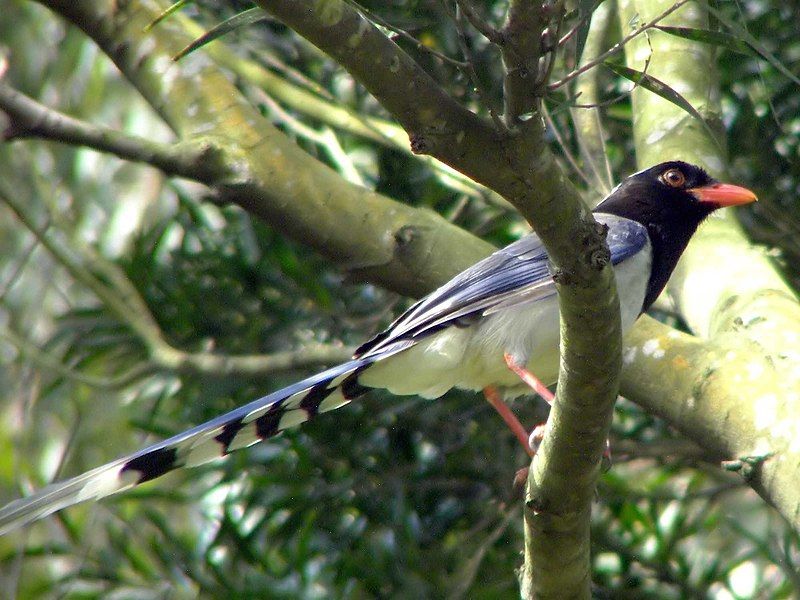
The red-billed blue magpie is an impressive species of bird that belongs to the Corvidae family, which is also known as the crow family. The bird is quite large, measuring in at 65 to 68 cm in length and weighing between 196 and 232 g.
It is similar in size to the Eurasian magpie, but has a much longer tail, making it one of the longest-tailed corvids. The tail alone can reach up to 40 cm in length. The red-billed blue magpie is a stunning bird, with glossy dark blue plumage and a lighter underbelly.
It is further distinguished by its bright red bill and yellow eyes. It is native to the tropical forests of southern India and Sri Lanka, where it can be found foraging for food in the undergrowth. Its diet consists mainly of insects, fruit, and small mammals.
The red-billed blue magpie is a social species, often seen in small groups of up to six birds. They are known to be quite vocal, producing a variety of calls and songs.
During the breeding season, they will build a nest in a tree or bush, with the female laying between two and four eggs. The young birds stay with their parents for some time after they have hatched.
The red-billed blue magpie is a remarkable bird, and its impressive tail sets it apart from other corvids. It is an important part of the biodiversity of southern India and Sri Lanka and is an interesting species to observe in its natural habitat.
| Kingdom | Animalia |
| Phylum | Chordata |
| Class | Aves |
| Order | Passeriformes |
| Family | Corvidae |
| Genus | Urocissa |
| Species | U. erythroryncha |
24. Asian Paradise Flycatcher
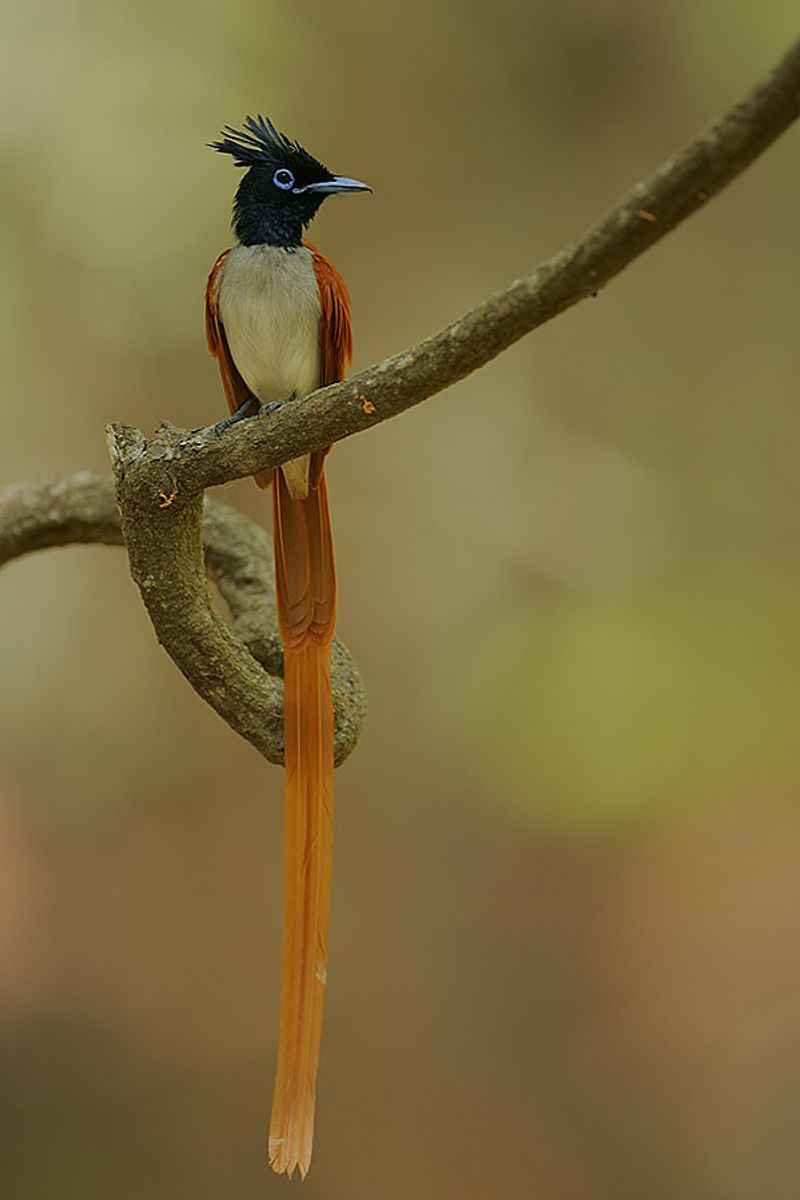
The Indian paradise flycatcher is a species of passerine bird native to Asia, where it is found in many countries. It has a medium-sized body, and its global population is considered to be stable.
This has led to the species being listed as Least Concern on the IUCN Red List since 2004.
Its native range includes the Indian subcontinent, Central Asia, and Myanmar. The Indian paradise flycatcher is an interesting species of bird, with its distinctive long tail feathers and white-tipped wings.
It inhabits a variety of habitats including forests, scrublands, and grasslands.
The bird is typically found alone or in pairs and is most active during the day. The species mainly feeds on insects, which it catches by either swooping down from a perch or flying low over the ground. It has also been known to feed on small fruits and berries.
Breeding typically occurs between April and June and usually results in two to three eggs being laid in a cup-shaped nest. The Indian paradise flycatcher is an important species in the region, providing an important source of food for other animals.
It is also a symbol of India, and its association with the country is reflected in its scientific name, Terpsiphone paradisi. This species is generally considered to be secure, and its future is not considered to be at risk.
| Kingdom | Animalia |
| Phylum | Chordata |
| Class | Aves |
| Order | Passeriformes |
| Family | Monarchidae |
| Genus | Terpsiphone |
| Species | T. paradisi |
Conclusion
Birds in Chiang Mai are a truly delightful sight to behold. With a large variety of species, from the rare and exotic to the common and familiar, the city is a haven for bird-watchers.
The protected wetlands, forest reserves, and national parks provide a safe habitat for many species. With the right equipment and knowledge, bird-watchers can spend hours marveling at the beauty and diversity of Chiang Mai’s avian life.